Chengjiang biota
Chengjiang biota is located near Maotianshan, Chengjiang, Yunnan Province, China. The stratum of Chengjiang biota is yellow-green silty shale of Yudanshan section of Qiongzhusi Formation of Lower Cambrian in Yunnan Province. It is a well-preserved early Cambrian paleontological fossil group.
She vividly reproduced the magnificent scenery of marine life and the original characteristics of living animals 530 million years ago, and provided valuable evidence for the study of the theory of the origin, evolution and ecology of life for 53.7 million years. The research and discovery of Chengjiang Biota not only provided scientific facts for the sudden non-linear evolution of the Cambrian life explosion, but also for Darwin's gradual change. Evolutionary theory poses great challenges. Chengjiang Biota covers 16 phyla and more than 200 species fossils (up to 2012). On July 1, 2012, Chengjiang Fossil Land was officially listed in the World Heritage List.
Shape characteristics
Chengjiang biota covers 16 phyla and more than 200 species where rare animal fossils were found, including invertebrate fossils and primitive chordate fossils. Particularly valuable is that the ancient representatives of all kinds of living things have found hard and soft impressions, which provide evidence for the study of physiological structure, biological habits, system evolution and ecological environment during the early Cambrian biological explosion. These findings not only provide scientific facts for the non-linear sudden evolution of the Cambrian explosion, but also pose a great challenge to Darwin's gradual evolution theory.
Chengjiang Fossil Land, which is very rare in the world, fully demonstrates the early Cambrian marine community and ecosystem.
The early Cambrian Chengjiang fauna in eastern Yunnan is a rare fossil treasure house in the world, characterized by the special preservation of soft-drive fossils of many species. More than 120 species of fossils of Chengjiang fauna have been found, which belong to more than 10 fauna such as sponges, coelenterates, linear animals, gills, mollusks, phyllopods, brachiopods, mollusks, arthropods, chordates and some strange taxa with unknown taxonomic positions. In addition, there are a variety of symbiotic algae; Chengjiang fauna vividly reproduces the real face of the marine life world 520 million years ago, tracing the earliest fossil records of most of the living fauna including chordates back to the early Cambrian period, fully demonstrating the diversity of early Cambrian organisms, and providing information for revealing the mystery of biological evolution of the "Cambrian explosion". Because of its precious direct evidence, it is praised as one of the most amazing scientific discoveries in the 20th century.
Distribution range
Chengjiang biota fossils are widely distributed, located 6 km east of Chengjiang County (Fenglu Town), Yuxi City, Yunnan Province, near Maotian Mountain. It is 56 kilometers away from Kunming and 87 kilometers away from Yuxi.
The Maotianshan fossil belt, which is 20 kilometers long and 4.5 kilometers wide, has a burial depth of more than 50 meters.
Horizon dating
Meishucun section in Jinning, Yunnan Province, is located at 24 44', 102 34', North latitude, East longitude. It is one of the candidate stratotype profiles for the international Precambrian-Cambrian boundary. In August 1984, Hou Xianguang worked in this section and found a small amount of jellyfish, worms and large double-valved arthropods in a layer of lime-green and gray-yellow mudstone (field No. AEF-k10) in the Eoredlichia-Wutingaspis belt of the Lower Cambrian Qiangzhusi Formation. Named Chengjiang Biota.
The Chengjiang fauna occurs in the yellow-green silty shale of the Lower Cambrian Qiangzhusi Formation in Yunnan Province. Most of them are strongly weathered, which makes it difficult to determine the isotope age. 40Ar/39Ar fast neutron activation method is used to determine the 40Ar-39Ar age of illite in the lower part of the Yubian section of Dapotou section in Chengjiang area, 559.22+0.77Ma; 40Ar-39Ar age of illite in the lower part of the Yubian section of Kunyang phosphate deposit in Jinning area, 40Ar-39 years. The age is 559.63+0.98 Ma. This age represents the lower isotopic age of Chengjiang fauna.
Find details
In mid-June 1984, Hou Xianguang, graduated from Nanjing Institute of Paleontology, Chinese Academy of Sciences, came to Maotianshan, Chengjiang County, Yunnan Province, to search for the fossils of the Cambrian myosomes. He came out early and returned late every day, climbed the rugged mountain road, searched for fossils of paleontology at selected sites, and cut down two or three tons of stones a day. However, hard work did not yield the desired harvest. He worked for more than a week, but he was still empty-handed. Hou Xianguang was disappointed.
At about 3 p.m. on July 1, Hou Xianguang, who was intensively excavated, lifted his foot and carelessly cut off a loose rock layer on his heel. A peculiar but well-preserved fossil emerged. He was delighted to use his knowledge to judge that it was an early Cambrian invertebrate fossil. He went on to discover three important fossils on the same day. Later, further identification revealed that the fossils were Naros, Mumps and Spikes.
Like opening the door to a treasure house of paleontology, Hou Xianguang discovered many contemporary fossils of arthropods, jellyfish and worms in the following days. After returning to Nanjing, he and his mentor, Professor Zhang Wentang, wrote the Discovery of Narozoa in the Asian Continent, and named the fossils of Chengjiang as "Chengjiang Biota".
Since the discovery of Chengjiang fossil fauna on July 1, 1984, Dr. Hou Xianguang and his collaborators, both Chinese and foreign geopaleontologists, have done a lot of scientific research. The basic contents of Chengjiang fauna have been basically clear. Nearly 100 genera and species of 17 ancient biological categories have been discovered, including algae in the botanical kingdom, sponges in invertebrates, and cavernous bones in invertebrates. Classes, coelenterates, Chlamydia, phyllopods, ciliates, jellyfish, arthropods, Yunnan worms, etc. It's the job of a specialist researcher to pinpoint the nature of these organisms. But we looked at the ecological restoration maps of Chengjiang fauna and rocks drawn by scientists based on the research results. Immediately they were attracted by the strange shapes of these creatures in the shallow waters of ancient times.
These creatures are only a few millimeters small, tens of millimeters large or even larger. Some of them are like sponges, worms today, jellyfish, shrimps, hats, vases, flowers, disks... It's so strange and beautiful. They show the strange features of various organisms in shallow waters 530 million years ago.
Fossil family
Trace fossils
7 genera and 8 species.
Anningichnus Obortus Luo et Hu, 1999
Simple Linear Trace Gordia Simex Luo et Hu, 1999
Irregular Liujiangichnus irregularis Luo et Hu, 1999
Lumbricaria yunnanensis Luo et Hu, 1999
Palaeophycus vermicularis Luo et Hu, 1999
Palaeophycus badaowanensis Luo et Hu, 1999
Montana Roaming Trail Planolites montanus Richter, 1937
Scolecocoprus shankoucunensis Luo et Hu, 1999
Fecal fossils
Fecal Fossils of Large Microfauna
Daxin Giant Chewing Animal Feces Fossil
Mud-eating faeces
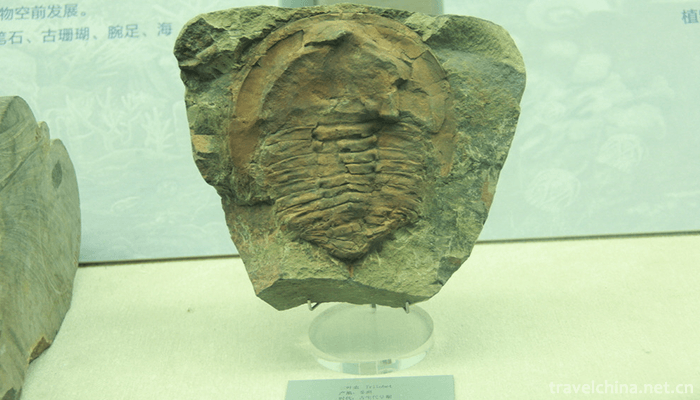
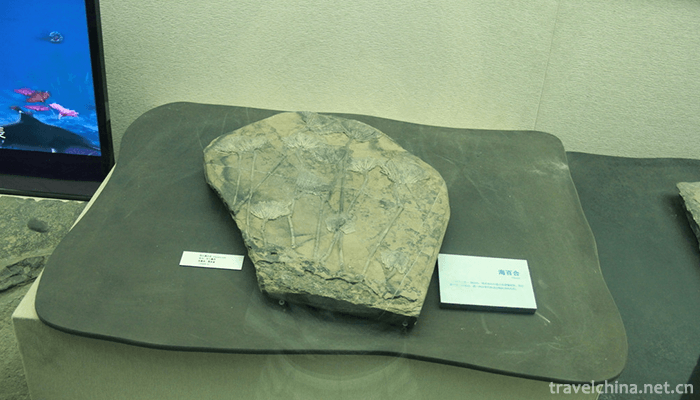
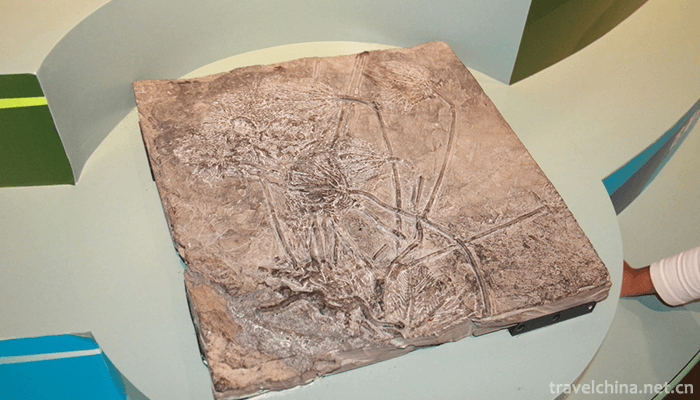

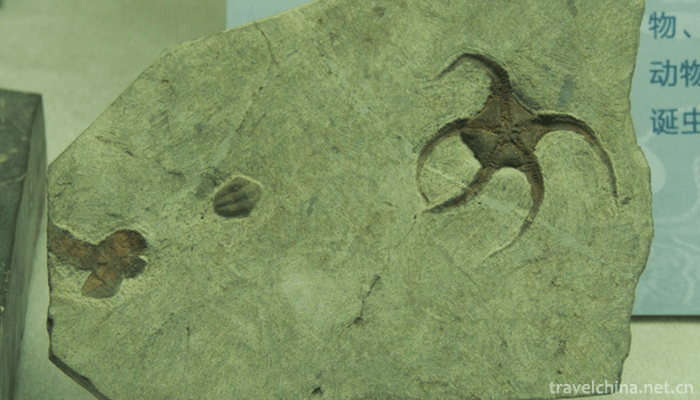
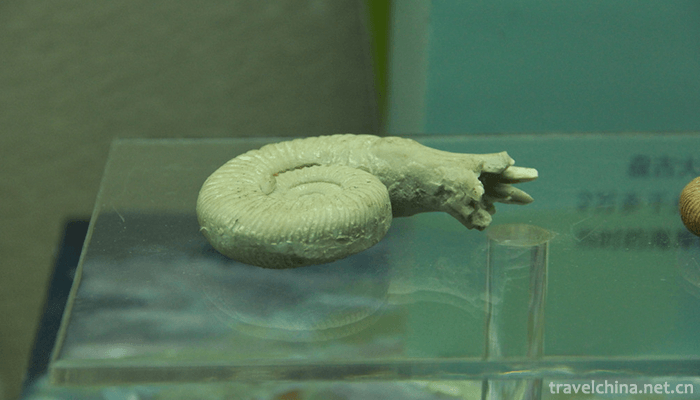
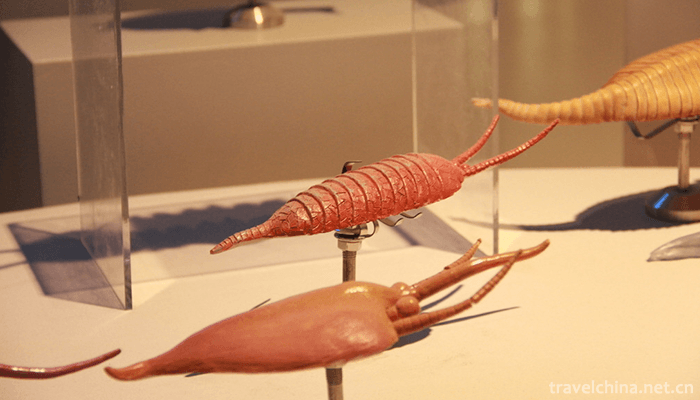
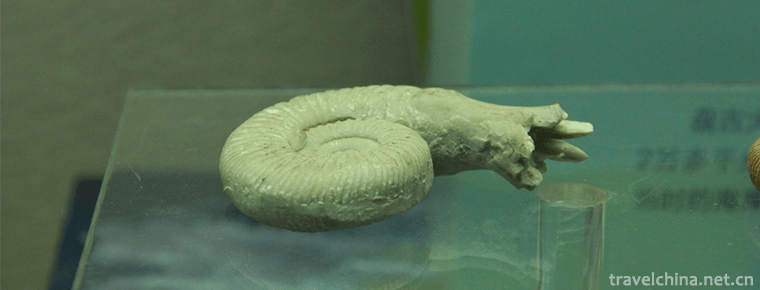
-
2.Soup with pepper
Soup with pepper, a well-known snack in Central Plains, originated in Xiaoyao Town, Xihua County, Zhoukou City, Henan Province, and Beiwudu Town, Wuyang County, Luohe City. Especially known as Xiaoyao
Time 2018-11-10 -
3.Longsheng Hot Spring Resort
Longsheng Hot Spring is located 32 kilometers northeast of Longsheng County. It takes 40 minutes to get to Longsheng Hot Spring by bus from the county town. Hot springs are gushed from rock strata 120
Time 2019-02-06 -
4.Castle Peak Pass Scenic Spot
Qingshankuan is located in the north of Qianxi County, 40 kilometers away from the county town, located in the Yanshan branch, the hinterland of Daqingshan Mountain.
Time 2019-02-07 -
5.Tibetan folk songs
Tibetan folk song is a magnificent flower in Tibetan folk literature, with profound ideological and high artistic quality. Throughout the development process of Tibetan folk songs
Time 2019-04-15 -
6.Ewenke to seize the pivot
Pivot-snatching is a traditional competitive event of Ewenki nationality. It was performed by the representative team of Inner Mongolia Autonomous Region in the 6th National Minority Traditional Sport
Time 2019-04-28 -
7.Money board
Money board is a traditional rap art in Sichuan, Guizhou and other places. It originated in Chengdu and Chongqing more than 300 years ago, and gradually spread to Yunnan
Time 2019-05-07 -
8.Mongolian Topshore Music
Topshore is a unique short-necked woody plucked string instrument of Mongolian nationality in Xinjiang. It is beautiful in shape, simple in manufacture, graceful in timbre and easy to carry. It is esp
Time 2019-06-04 -
9.Tin carving
Tin sculpture, the traditional Chinese sculpture art, is a unique craft in China and even in the world. It has a history of more than 300 years. The craft has a long history and has a long history. In
Time 2019-07-01 -
10.Han Yu
Han Yu (768 - 824 December 25th) retreated. Henan Heyang (now Henan Province Mengzhou People. Claiming to be "Changli," the world is called "Han Changli" and "Mr. Changli"
Time 2019-09-07 -
11.Neijiang folk culture
Bull lantern dance is popular in Yuexi. One dressed as a shepherd boy and two dressed as cattle with cow shaped props. In the sound of gongs and drums, the shepherd boy first said doggerel to the audience to express the festival's congratulations, and then
Time 2020-12-16 -
12.Guangan secondary industry
In 2019, the industrial added value of Guang'an City will reach 28.87 billion yuan, an increase of 8.8%, and its contribution rate to economic growth will be 34.9%. At the end of the year, there were 597 Industrial Enterprises above Designated Size, and
Time 2020-12-19